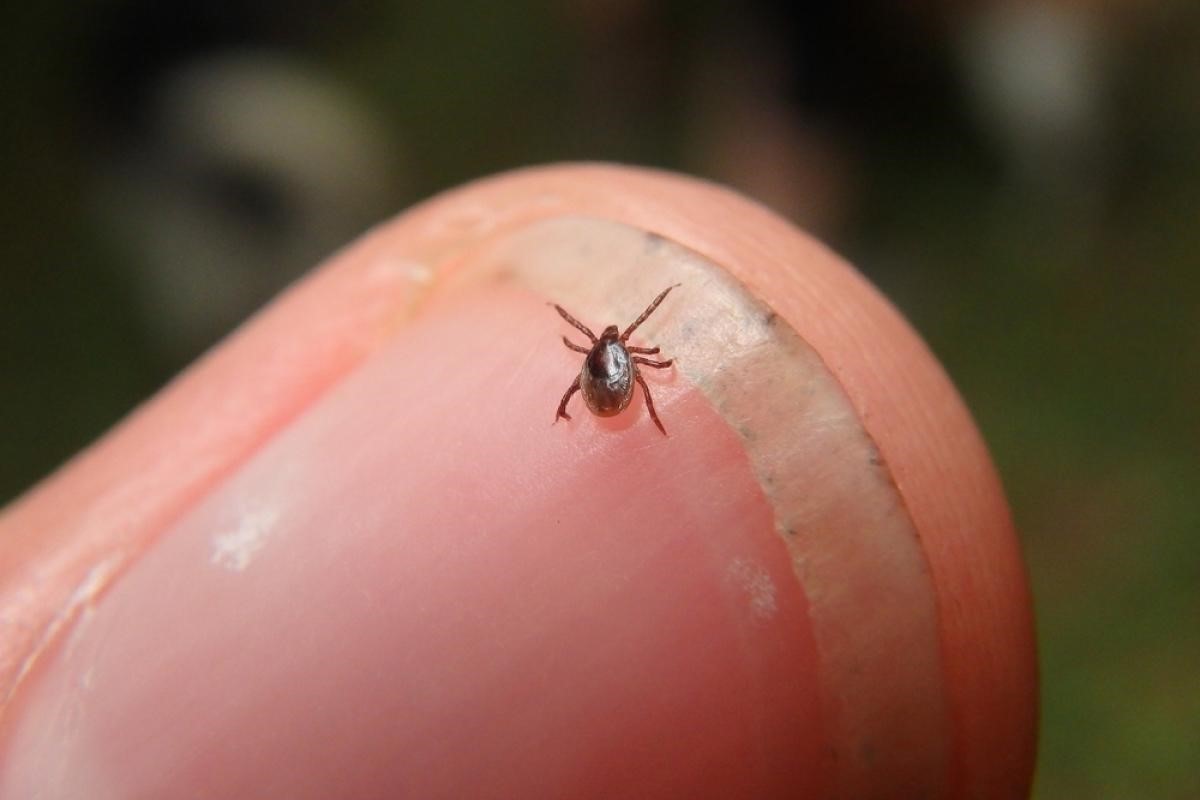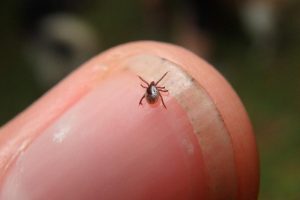
Have you been outdoors or in the garden? Check yourself and your children thoroughly for ticks, especially the armpits, groin, knee cavities, neck and behind the ears. If you discover a tick, remove it immediately with pointed tweezers and write down the date and whereabouts it is on your body.
Check yourself and your children thoroughly for ticks, especially the armpits, groin, knee cavities, neck and behind the ears. If you discover a tick, remove it immediately with pointed tweezers and write down the date and whereabouts it is on your body.
Ticks are very small, 1 to 3 millimeters. They occur mainly from March to November, when it reaches 7 degrees or more. Some ticks are infected with bacteria. They then can transfer diseases such as Lyme disease, although it is not very likely that you will be infected.
Contact your GP if:
- you are unable to remove the tick
- the tick has been attached to your skin for 24 hours or longer
- you develop complaints within a few days up to 3 months after a tick bite, such as:
- a large red spot or ring that grows slowly,
- flu-like symptoms or
- joint complaints.
How to remove a tick?
Caution: Do not use alcohol, oil, nail polish, soap or other substances on a stuck tick. It could increase the likelihood of contamination.
To remove the tick:
- Use a pointed tweezer to grab the tick as close to your skin as possible.
- Gently pull the tick out perpendicularly (and without turning).
- Don’t worry if the head of the tick comes off and remains in the skin. The remaining piece will come out by itself, just like a splinter. It can become infected, though.
- After removing the tick, clean the wound with an alcohol (70%) or povidone solution. If you don't have this use soap and water.
- Check if you have any more tick bites.
- Note in your calendar.
-
- The date of the tick bite.
- The region and country where you were at that time.
- The place on your body where the tick had been attached to your skin. Use a pen to mark the spot on your skin or take a picture of it.
- Insect your skin thoroughly in the following 3 months and take note if you discover a red or bluish-red spot around the tick bite. On dark skin, the spot can look more yellowish or bluish. Check with your GP if you notice such a spot.
- Also contact your GP if you discover such a spot in another place on your body.
![]() This news item is a translation of a post by Thuisarts.nl. The information is not intended to replace a consultation with a GP. For personal advice, please contact your GP. Please read our disclaimer.
This news item is a translation of a post by Thuisarts.nl. The information is not intended to replace a consultation with a GP. For personal advice, please contact your GP. Please read our disclaimer.
